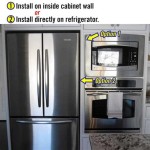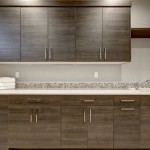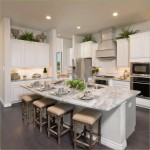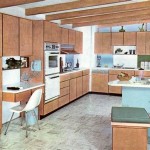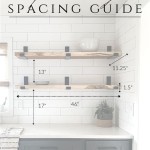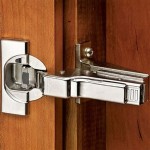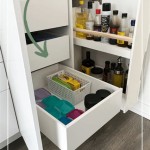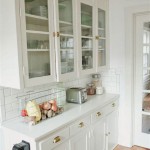The Comprehensive Guide to the Cost of Kitchen Cabinets Installed
Kitchen cabinets are a fundamental component of any kitchen renovation or new construction project. They define the kitchen's style, provide crucial storage space, and significantly impact the overall functionality and aesthetic appeal of the room. Understanding the cost of kitchen cabinets, including installation, is paramount for budgeting and making informed decisions throughout the process. This article delves into the various factors that influence the cost of kitchen cabinets installed, providing a detailed breakdown of expenses and considerations.
The cost of kitchen cabinets installed can vary widely depending on several factors, making it crucial to understand the nuances of each contributing element. These factors range from the type of cabinets selected and the materials they are made from to the complexity of the installation process and the geographic location of the project. A thorough assessment of these factors is essential for developing an accurate budget and avoiding unexpected expenses during the renovation or construction process.
Material selection will impact the price of the cabinets the most. For example, solid wood will cost more than melamine or laminate.
Key Factors Influencing Kitchen Cabinet Costs
Several crucial elements determine the final cost of kitchen cabinets installed. Understanding these factors is essential for accurately budgeting and making informed decisions.
Cabinet Type and Style
The type of kitchen cabinets selected significantly impacts the overall cost. There are three primary categories of kitchen cabinets: stock, semi-custom, and custom. Each option offers a different balance of affordability, customization, and lead time.
Stock Cabinets: These are pre-built cabinets available in standard sizes and finishes. They are the most affordable option and are typically readily available, making them ideal for budget-conscious projects or situations where time is a constraint. However, stock cabinets offer limited customization options and may not be suitable for kitchens with unusual layouts or specific design requirements.
Semi-Custom Cabinets: These cabinets offer a greater degree of customization than stock cabinets. While they are still based on standard sizes, semi-custom cabinets provide more choices in terms of door styles, finishes, and modifications. This allows for a more tailored look without the expense of fully custom cabinets. Semi-custom cabinets typically incur a higher cost than stock cabinets but offer a better balance of affordability and customization.
Custom Cabinets: These are built to exact specifications, offering complete design flexibility and catering to unique kitchen layouts and aesthetic preferences. Custom cabinets are the most expensive option, as they require skilled craftsmanship and specialized materials. However, they provide unparalleled opportunities for personalization and can be tailored to maximize space utilization and reflect individual style.
Beyond the type of cabinet, the door style also impacts the cost. Intricate designs, raised panels, and specialized finishes often lead to higher prices compared to simpler, flat-panel doors.
Material Selection
The materials used in kitchen cabinet construction contribute significantly to the overall cost. Different materials offer varying levels of durability, aesthetic appeal, and price. Common materials include solid wood, plywood, particleboard, and MDF (Medium-Density Fiberboard).
Solid Wood: Solid wood cabinets are prized for their durability, natural beauty, and timeless appeal. They are typically the most expensive option, but offer superior strength and longevity. Popular wood species include oak, maple, cherry, and birch, each with its unique grain patterns and characteristics. Solid wood cabinets can be stained or painted to achieve a desired look and can withstand wear and tear effectively.
Plywood: Plywood is an engineered wood product made from multiple layers of wood veneer glued together. It offers good strength and stability and is less prone to warping or cracking than solid wood. Plywood is often used for cabinet boxes and is generally more affordable than solid wood. It provides a solid base for cabinets and can be finished with a variety of veneers or laminates.
Particleboard: Particleboard is another engineered wood product made from wood chips and resin. It is the least expensive option, but also the least durable. Particleboard is often used for cabinet boxes in budget-friendly kitchens. However, it is susceptible to moisture damage and may not withstand heavy use over time. Cabinets made with particleboard generally have a shorter lifespan than those made with solid wood or plywood.
MDF (Medium-Density Fiberboard): MDF is an engineered wood product made from wood fibers and resin. It is denser than particleboard and offers a smooth, consistent surface, making it ideal for painted cabinet doors and drawer fronts. MDF is less prone to warping than solid wood and provides a cost-effective alternative for painted cabinets. However, it is still susceptible to moisture damage and should be properly sealed and protected.
The choice of hardware, such as hinges, pulls, and knobs, also contributes to the overall cost. High-end hardware made from durable materials like stainless steel or brass can significantly increase the price, while more basic options offer a more budget-friendly alternative.
Installation Complexity
The complexity of the kitchen cabinet installation process significantly impacts the labor costs involved. Several factors contribute to installation complexity, including the kitchen layout, the presence of obstacles such as plumbing or electrical wiring, and the level of customization required.
Kitchen Layout: Simple, straightforward kitchen layouts with straight walls and minimal obstructions are generally easier and less expensive to install cabinets in. Conversely, kitchens with irregular shapes, angled walls, or limited access can increase the installation time and cost. In such cases, custom cabinet solutions may be necessary to maximize space utilization and ensure a proper fit.
Obstacles and Modifications: The presence of plumbing, electrical wiring, or other obstacles can complicate the installation process and require modifications to the cabinets. For example, cabinets may need to be cut or notched to accommodate pipes or electrical outlets. These modifications add to the installation time and labor costs. Rerouting plumbing or electrical wiring can further increase the overall expense.
Customization and Modifications: Installing custom cabinets or making modifications to stock or semi-custom cabinets requires specialized skills and experience. Custom installations often involve precise measurements, intricate cuts, and detailed finishing work. These tasks can significantly increase the labor costs compared to installing standard, pre-built cabinets. The more complex the customization, the higher the installation cost will be.
It is important to consider the skill and experience of the installer. Hiring a qualified and experienced contractor can ensure a proper installation, minimizing the risk of future problems and maximizing the lifespan of the cabinets. While a DIY installation may seem appealing from a cost perspective, it is crucial to assess one's skills and experience carefully to avoid costly mistakes.
Breaking Down the Cost: Materials vs. Labor
Understanding the breakdown of costs between materials and labor is crucial for budgeting effectively. Generally, the cost of kitchen cabinets installed is composed of two main components: the cost of the cabinets themselves (materials) and the cost of the installation services (labor).
Material Costs: This includes the cost of the cabinets, hardware, and any other materials required for the installation. The material costs can vary widely depending on the type of cabinets selected, the materials they are made from, and the complexity of the design. As discussed earlier, custom cabinets made from solid wood will be significantly more expensive than stock cabinets made from particleboard.
Labor Costs: This includes the cost of hiring a contractor or installer to install the cabinets. Labor costs can vary depending on the complexity of the installation, the geographic location, and the experience of the installer. Simple installations in straightforward kitchens will generally have lower labor costs than complex installations in kitchens with irregular layouts or significant modifications required.
Typically, material costs account for a larger percentage of the overall cost than labor costs. However, the exact proportion can vary depending on the specific details of the project. For example, a project with low-cost stock cabinets may have a higher proportion of labor costs, while a project with high-end custom cabinets will have a higher proportion of material costs.
Obtaining detailed quotes from multiple contractors is essential for understanding the breakdown of costs and ensuring a fair price. These quotes should clearly outline the costs for both materials and labor, allowing for a comprehensive comparison and informed decision-making. It is also important to inquire about any potential additional costs, such as disposal fees or permits, to avoid unexpected expenses.
Geographic Location and Other Expenses
Geographic location plays a significant role in determining the cost of kitchen cabinets installed. Labor costs, material prices, and permit fees can vary widely depending on the region. Metropolitan areas with a higher cost of living typically have higher labor costs and material prices compared to rural areas.
Labor Costs: The prevailing wage rates for contractors and installers can vary significantly depending on the geographic location. Areas with a high demand for skilled labor and a limited supply of contractors will typically have higher labor costs. Conversely, areas with a lower cost of living and a greater supply of contractors may have lower labor costs.
Material Prices: The prices of materials, such as lumber, plywood, and hardware, can also vary depending on the geographic location. Transportation costs, local supply and demand, and regional regulations can all impact material prices. For example, areas with abundant local lumber resources may have lower prices for solid wood cabinets compared to areas that rely on imported lumber.
In addition to labor and material costs, there are other potential expenses to consider, such as permit fees, disposal fees, and unforeseen repairs. Obtaining the necessary permits for kitchen renovations is essential for ensuring compliance with local building codes. Permit fees can vary depending on the scope of the project and the jurisdiction. Disposal fees may be incurred for removing old cabinets and other construction debris. Unforeseen repairs may be necessary if hidden damage is discovered during the renovation process, such as rotted wood or damaged plumbing.
Allowing a contingency fund in the budget is advisable to account for unexpected expenses and ensure that the project stays on track. A contingency fund of 10-15% of the total estimated cost is generally recommended. This will provide a buffer to cover any unforeseen repairs, modifications, or price increases that may arise during the renovation process.
Ultimately, the cost of kitchen cabinets installed depends on a complex interplay of factors, including cabinet type, material selection, installation complexity, geographic location, and other potential expenses. A thorough assessment of these factors and careful planning are crucial for developing an accurate budget and achieving a successful kitchen renovation.

How Much Does It Cost To Install Kitchen Cabinets Az Cabinet Company

How Much Does It Cost To Install Kitchen Cabinet Singapore

Kitchen Cabinets Costs 2024 Data Angi

How Much Do Kitchen Cabinets Cost 2024 S Homeguide

How Much Does A Kitchen Remodel Cost 2024 Average

Fixr Com Kitchen Cost

Kitchen Installation Cost 2024 Data

What Do Kitchen Cabinets Cost Tips To Stay In Budget

Average Cost To Replace Cabinets Forbes Home

Cost To Install Cabinet Hardware 2024 Data
Related Posts

